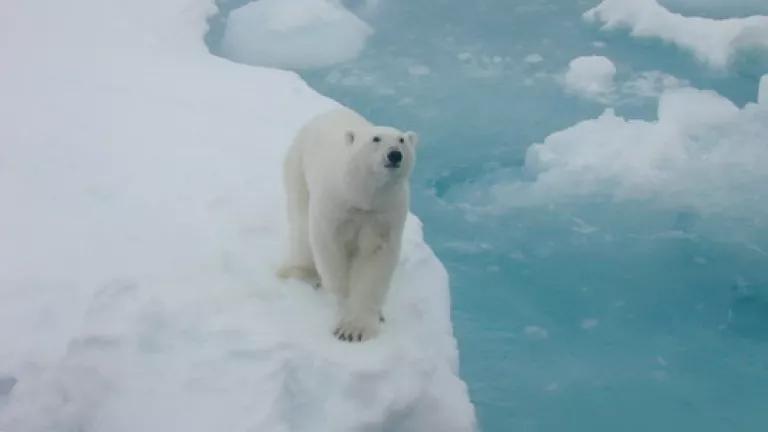
Last week, the Los Angeles Times published an article entitled “40% decline in polar bears in Alaska, western Canada heightens concerns,” detailing a population study of the southern Beaufort Sea polar bear population from 2001 to 2010.
Why am I posting such bad news in a Thanksgiving blog post? Well, here goes: while I’m certainly not thankful for the 40 percent decline in the southern Beaufort Sea polar bear population, I am thankful for good quality science that lays out for us in clear terms the future of this species. Armed with this science, we can take steps to give polar bears the best chance of surviving into the next century.
Way back in 2008, the polar bear was listed as threatened under the U.S. Endangered Species Act, in part based on groundbreaking science, which studied the impact future sea-ice habitat loss from global warming will have on polar bear populations. The projections are grim, indicating that two-thirds of the total polar bear population will be gone by 2050. And, by the end of the century, only a small number of polar bears will remain in isolated regions of the Canadian Arctic Archipelago, where sea-ice conditions will change more slowly in the face of global warming.
I know what you’re thinking, “This is still bad news, why are you thankful?” I’m about to get there, stick with me.
Studies since 2008 have confirmed that sea ice is essential habitat for polar bear survival, as scientists have repeatedly observed a direct correlation between decreased sea-ice extent and declining polar bear body conditions, size, and survival. Scientific papers published in recent years also demonstrate through observation a direct correlation between reduced sea ice and decreased polar bear population growth and size.
And now we have the latest study, showing a 40 percent decline in the southern Beaufort Sea population — a population dependent on a particular kind of sea-ice (Divergent Ice) that was previously projected by the aforementioned study to suffer the earliest consequences from global warming. That’s pretty good evidence backing up a projection. To be sure, the study notes other factors at play, which is totally expected. As polar bears permanently disappear from parts of the globe, no one expects the loss to perfectly align with the state of sea ice at any given time. But that’s all about variations and permutations in the middle. By relying on quality science, we know what the end result will be if we do nothing.
So, despite all of the bad news on polar bears, studies like this affirm my appreciation for good, quality science. That science tells us what’s going to happen to polar bears and is being backed up again and again by subsequent studies. I’m thankful we’re not speculating or guessing. The challenge is clear: we have to act now and take steps to give polar bears the best chance of surviving into the next century, like limiting the killing of polar bears to supply international demand for polar bear parts (skins, skulls, teeth, etc.). We can and should do that through the Convention on Trade in Endangered Species.
Yes, I’m thankful for good science, even when it’s bad news, because it affirms that positive steps we must take for our future.
Photo: NOAA

